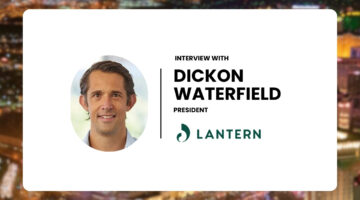
In the past couple years, AI-powered ambient documentation tools have done a commendable job at reducing clinicians’ administrative burden — and the initial success of these tools points to a bright future for AI scribes, with added capabilities for things like billing and data gathering, according to healthcare leaders’ remarks at a recent webinar.
Ambient documentation tools are helping address healthcare’s workforce crisis by alleviating clinicians’ burnout, stress and turnover, as well as restoring their connection with patients, said Karen Wetherell, chief medical officer of Village Medical, during a webinar Reuters Events held last month.
Some companies that sell these tools include Microsoft, Suki, Abridge and DeepScribe. The tools can generate clinical notes by ambiently listening to a conversation between a physician and patient, with these notes being sent back to the EHR for clinician review before finalization.

How Lantern Delivers ROI Through Smarter Healthcare Navigation
Dickon Waterfield discusses why Lantern's navigation works.
Many physicians have felt overwhelmed by their increasing administrative burden, forcing them to consider retirement or switching careers — but Wetherell said she has noticed this trend begin to change thanks to ambient AI technology.
“Now, with AI, our providers have literally come to me and told me, ‘I enjoy my day again. I feel caught up. I have less time that I’m spending on charts in the evening. I feel like I can get back to my patients quicker with messages, and I can give them better, more complete instructions because I’m not rushing,’” she remarked.
By improving the clinician’s relationship with the electronic medical record, AI also helps enhance the clinician-patient bond, pointed out fellow panelist Bobby Dupre, chief medical information officer at Franciscan Missionaries of Our Lady Health System.
“Between the physician and EMR, it’s always been a bit adversarial because we’re trying to enter data as we’re trying to talk to the patient, and we may have our back turned. We’ve been seeing that change — and I think we will see, as we move forward, even more changes between the physician-patient and -EMR relationship, as our EMRs will have to shift — and it may become less of a visual interface and more of a conversational interface,” Dupre said.

Integrating GLP-1s: How Berry Street is Redefining Nutrition Care
Richard Fu details the company's approach to nutrition therapy and strategy for patients using GLP-1s.
He added that in the future, he would like to see more AI documentation tools that can help clinicians access the right data at the right time.
Given the overwhelming amount of data in the EMR, AI can surface the most relevant information to clinicians, Dupre explained. This can help healthcare providers make decisions more quickly, especially in specialties like rheumatology, where diseases manifest in many different ways.
“So many of us do chart reviews almost every time we see a patient to make sure that they haven’t had a new feature that makes me think I’ve got to change their course of therapy. I want to see AI beginning to serve that up — I think that’s in our near future. And being able to do that on a specialty basis, that would make us so much more efficient in seeing patients as we walk into a room,” Dupre declared.
And while physicians are “the ultimate foundation” of healthcare, it’s important to remember there are also many other staff members working around them to make sure that they can stay efficient, he noted.
In the coming years, Dupre wants to see more AI tools aimed at optimizing back-end functions like coding, billing, and claims processing.
“Can physicians and health systems get paid faster? Can all of these [billing and claims] systems be made more efficient using AI? I like to step back and take a look at that as well — because all of that benefits the patient, provider and organizational growth, as well as efficiency across the whole organization,” he stated.
Photo: metamorworks, Getty Images






